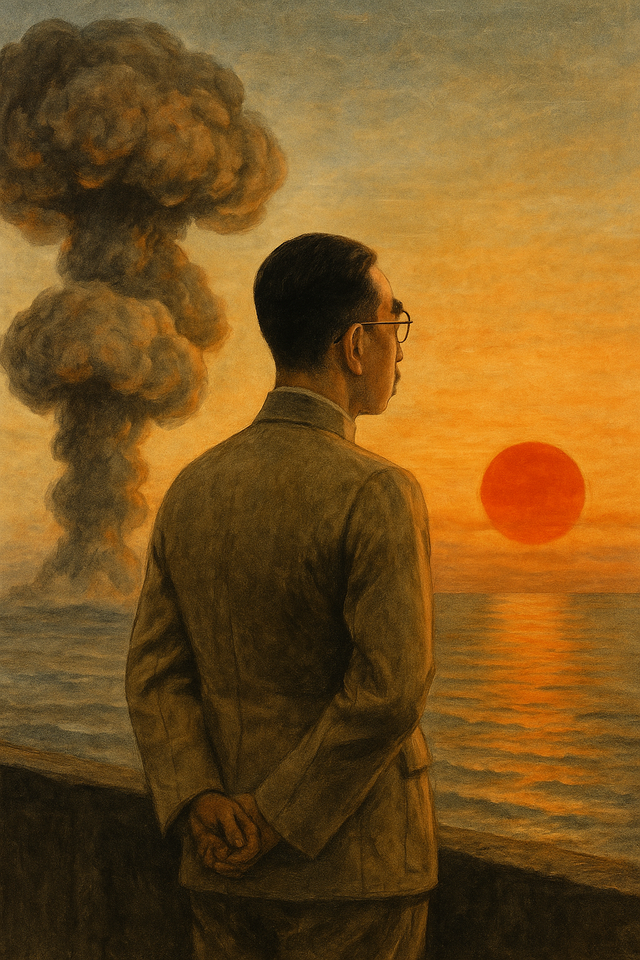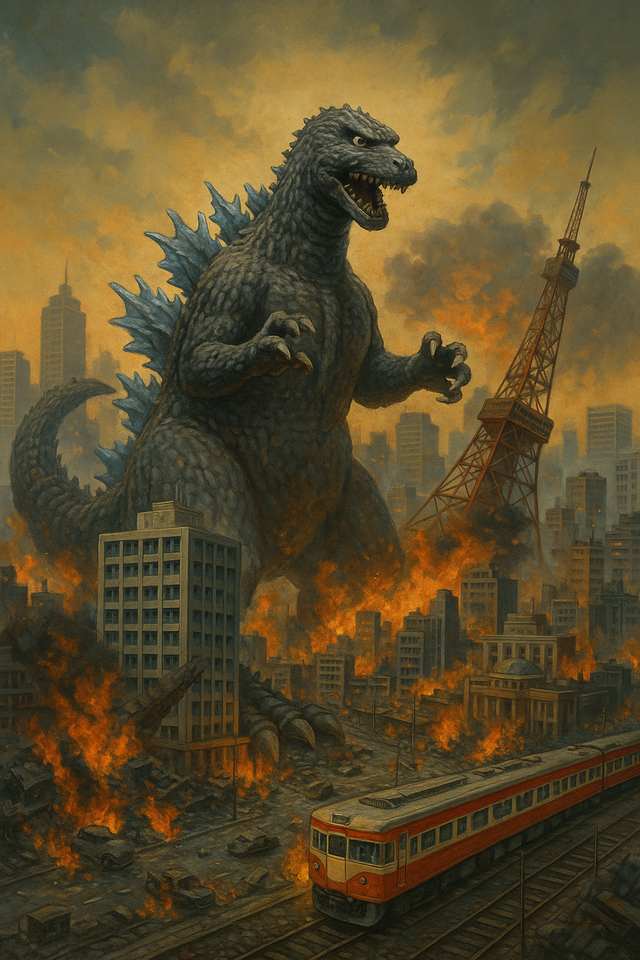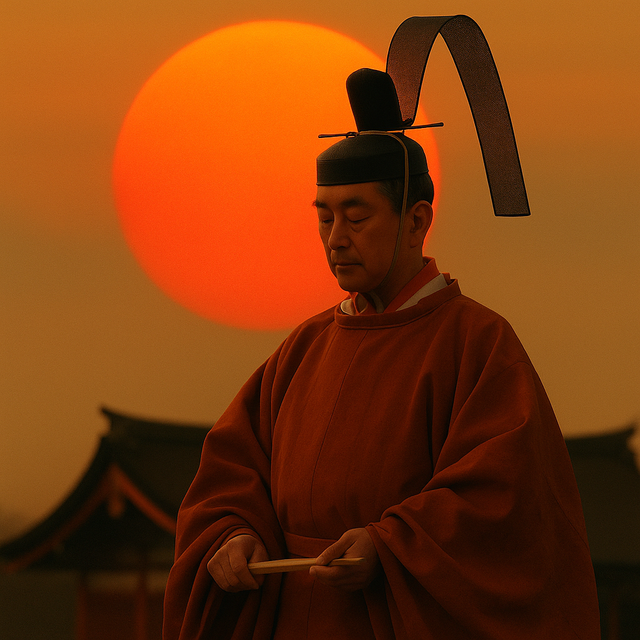This day in History May 3 1946 When the Sun god’s Son Bowed to Mortal Men
This Day in History – May 3
“When the Sun God’s Son Bowed to Mortal Men (or So They Said)”
A Tragedy in the East—Played Out Beneath the Rising Sun

The war in the Pacific was over.
Japan—once roaring like a dragon across the East—was smoldering. From Manchuria to the Pacific Rim, her empire—built on ancient gods, divine bloodlines, and imperial fire—cracked under the weight of modern wrath.
Hiroshima and Nagasaki still hissed with radioactive silence, the ghostly breath of judgment. And across the sea, President Truman held more bombs—ready to drop them all until Japan bent the knee.[1]
On January 1, 1946, Emperor Hirohito read what became known as the Humanity Declaration. He claimed before the world, “I am not divine.”[2]
But on May 3, 1947, it became law. Japan’s new Constitution came into force—stripping the emperor of political power and enthroning Western democracy.
It was not repentance. It was damage control.
A political concession—written in careful Western hands, spoken in tones that still carried ancient incense.
The world cheered. But heaven did not.
And as the first rays of dawn broke across the islands of Nippon, the people turned—as they always had—to their emperor, hoping to feel the warmth of heaven through his voice.
But this time, he too turned eastward, squinting into the void, looking for the face of his great-great-great-great-great-grandmother—the goddess of the sun… Just to say good morning.
But the sky was silent. And the myth began to smolder.
I. They Truly Believed This
You don’t train young men to scream “Tora! Tora! Tora!”[3]
You don’t perform seppuku with a death poem in your mouth.
You don’t launch kamikaze oaths to your ancestors... unless you believe.
The Japanese empire was not just political. It was theological.
Every plane. Every shrine. Every flag with the rising sun—declared that their people came from heaven, and their emperor was heaven’s son.
And when that myth was exposed, they didn’t kill it. They mutated it.
II. The Gospel That Was Not the Gospel
Long before the bombs fell, Japan met a form of Christianity. But it wasn’t the gospel of Christ. It was the gospel of Rome—delivered in robes, rituals, and power.
- Jesuits like Francis Xavier brought crucifixes and cathedrals.[4]
- But along with the cross came papal supremacy, statues of Mary, and a foreign throne pretending to speak for heaven.
To the Shogun, it was just another imperial threat.
“This isn’t a Savior—it’s a Caesar in clerical garb.”
And so Japan crushed the faith—not because it knew Jesus—but because it had only ever seen a politicized Christ, offered by a rival emperor with a golden cup.
They rejected the impostor—and in doing so, hardened their hearts against the real King when Protestant missionaries arrived centuries later.
They never met Jesus. They only met Rome.[5]
III. A Beast from the Sea
In 1954, just seven years after Hirohito’s declaration, something rose from the sea.
It wasn’t a god. It wasn’t a man. It was something in between.
It was Godzilla.[6]
A radioactive dragon. Born from war. Bathed in silence. And beloved by the very nation he destroyed.
He crushed cities. He defeated other monsters. But he never called for repentance.
This is Godzillism—a theology of pain without a cross. A doctrine of wrath without the Lamb.
IV. Japan Will Deal With This
And while the beast rose and roared, the West stayed silent.
In every film, in every retelling—America never helps.
There are no jets from Washington. No gospel in the ruins. No savior from overseas.
“Japan will deal with this.”
And so they did. Not with repentance. Not with revival. But with nationalism, technology, and polite atheism.
They bowed to defeat. But never bowed to Christ.
V. The Flag Still Flies
And through it all—the rising sun still burns on Japan’s flag.
Westerners see a red circle. But to Japan, it is the visible legacy of Amaterasu.
The mark of divine origin. The declaration that Nippon is still from heaven.
They didn’t burn their beast. They stitched it into silk.
VI. The Other Thrones Still Standing
- Germany: Symbols banned. Leaders executed.
- China: The emperor fell, but the Party rose.
- Britain: Anoints monarchs as if divine.
- Rome: Still drinks from the golden cup.[7]
Each nation preserved its beast. Each prepares the world for the final Beast.
“And I stood upon the sand of the sea, and saw a beast rise up out of the sea…” — Revelation 13:1
VII. The King They Forgot
“Jesus Christ the same yesterday, and to day, and for ever.” — Hebrews 13:8
He was never crowned by men. He was crucified by them.
And He will return—not as a lamb—but as the Lion of Judah.
“That at the name of Jesus every knee should bow… and every tongue should confess that Jesus Christ is Lord…” — Philippians 2:10–11
Yes—even the emperor of Japan who refused to repent in 1946 will bow. And so will you.
VIII. Final Invitation
The question is not if you will bow. The question is when.
Will you bow now—while your heart still beats?
Or will you wait… until you are dragged from the depths of hell to confess what you spent your life denying?
Jesus is Lord.
Every throne will fall. Every myth will burn. And the King will reign forever.
Epilogue: When the Gospel Followed the Fire
There was a glimmer of Christ in the ashes.
After the war—after Hiroshima, after Nagasaki, after the emperor bowed to political pressure but not to God—then the missionaries came.
Not with demands, but with Bibles. Not with empire, but with a kingdom not of this world.
And in the quiet places of ruin, a few believed.
Churches sprang up in borrowed rooms. Hymns rang out under the rising sun. The blood of the Lamb was preached where once only the blood of warriors had mattered.
There were baptisms in Nagasaki.
There were prayers in Hiroshima.
There was hope, however faint.
But even now—decades later—how few are truly reached.
The congregations still lean foreign.
The pulpits often still speak with foreign tongues.
And native sons still bow more easily to ancestor and emperor than to Christ.
The soil was broken by bombs,
but the hearts remain hard.
There was a glimmer of Christ in the chaos… But the myth still lingers. The sun still rises on the flag. And the Cross, for most, is still unwelcome.
Yet the call still goes forth:
Repent. Believe. Bow now—while mercy still waits.
For the day is coming when every knee shall bow… and for many, it will be too late.
Disclaimer: This post speaks of biblical Christianity—faith in the crucified and risen Jesus Christ, salvation by grace through faith, and the authority of Scripture. It does not refer to cults or sects such as Mormonism (LDS), Jehovah’s Witnesses, Christian Science, or Roman Catholicism pretending to be the church of Christ. True Christianity is not a denomination, but a new birth through the finished work of Jesus Christ alone.
Footnotes:
- Hiroshima and Nagasaki bombing details and postwar plans.
- The Humanity Declaration of January 1, 1946.
- The meaning behind “Tora! Tora! Tora!”.
- Francis Xavier and Jesuit missions to Japan.
- Christian persecution during the Tokugawa era.
- 1954 Godzilla film and its symbolism.
- Revelation 17 on the Whore of Babylon.
Still Worshiped in Shadow
Though the emperor publicly renounced his divinity in 1946, the rituals tell another story.
- Daijosai (大嘗祭): A secretive Shinto rite where the new emperor offers rice and prayers to the sun goddess Amaterasu, reaffirming his sacred lineage.
- Presentation of the Three Sacred Treasures: The sword, mirror, and jewel are symbols of divine authority, handed down from the gods—never displayed publicly, only venerated.
- Sojoden-no-gi: A funeral rite where Shinto priests transfer power to the new emperor with prayer, incense, and ancestral presence.
Even in modern Japan, these rites continue—not as history, but as living theology. The emperor is still seen as the bridge between earth and heaven, the "High Priest of the Nation".
He may wear a suit instead of armor, but he still walks in the shadow of the sun.


